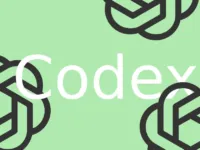Publié : 25 November 2025
Actualisé : 8 hours ago
Fiabilité : ✓ Sources vérifiées
Je mets à jour cet article dès que de nouvelles informations sont disponibles.
OLMO 3: What if AI Finally Became Transparent? The Open-Source Bet!
📋 Table of Contents
Artificial intelligence is everywhere, constantly discussed. We hear about ever more powerful, more “intelligent” models capable of astounding feats. But let’s be honest: who truly understands how these AI giants make their decisions? Who can explain why an algorithm provides one answer over another? This is the famous “black box” of AI, a mystery that fuels as much fascination as it does concern. But a new star is about to shine, and it promises to change the game. Ready to lift the veil?
🕵️♀️ The AI Black Box Dilemma
For years, AI development has followed a trajectory that has led us to incredibly powerful systems, but also incredibly opaque ones. Models like GPT-4 or Gemini are engineering marvels, capable of generating text, coding, and reasoning. Yet, their internal workings remain a closely guarded secret, even from their creators. We give them an input, they spit out an output. But the “why” and the “how”? Radio silence.
This opacity raises fundamental questions. How can we trust an AI whose potential biases we don’t understand? How can we correct an error if we don’t know its origin? This is a major challenge for the ethics, security, and widespread adoption of these technologies.
The key point to remember: Most current AIs are “black boxes” with opaque decision-making processes, hindering trust, error correction, and ethics.
✨ OLMO 3: A Glimmer of Transparency
This is where OLMO 3 comes in. Developed by the Allen Institute for AI (AI2), this new language model isn’t just another AI on the market. It’s a true statement of intent. Its goal? To make AI reasoning transparent. Imagine not only seeing an AI’s answer but also understanding *how* it arrived at that answer. That’s OLMO 3’s promise, a radical approach in a world dominated by secrecy.
By choosing the open-source path, AI2 isn’t just sharing code. They are sharing the philosophy of an explainable, verifiable, and ultimately, more reliable AI. It’s a breath of fresh air for the scientific community and for everyone concerned about the future of AI.
“Transparency is not a luxury in the field of AI; it is a necessity. Without it, we are building towers on uncertain foundations.”
🔍 Why is Transparency So Crucial?
Transparency isn’t just a buzzword. It’s the cornerstone of responsible AI. Firstly, it allows for the detection and correction of biases. If an AI makes discriminatory decisions, transparency helps us identify the source of the problem in its data or training. Secondly, it builds trust. How can we ask healthcare or legal professionals to use tools whose workings they don’t understand?
Finally, transparency is a driver of innovation. By opening the hood, OLMO 3 invites researchers worldwide to inspect, improve, and build upon its foundations. It’s an accelerator of discoveries, a catalyst for more ethical and higher-performing AI.
Important: Transparent AI allows for better bias detection, strengthens user trust, and fosters collaborative innovation.
🤝 The Open-Source Advantage: A Collaborative Model
The choice of open source for OLMO 3 is not insignificant. It’s a philosophy that has already proven its worth in the software world. Think of Linux, WordPress, or TensorFlow. Open source means collaboration, peer review, continuous improvement by a global community. It’s the antithesis of the proprietary, closed model that characterizes most current large AI models.
With OLMO 3, AI2 is betting on collective intelligence to advance AI. This movement could democratize access to cutting-edge technologies and enable smaller players to compete with giants, not through raw computing power, but through reasoning quality and trust.
Here’s a brief comparison to better understand the stakes:
| Characteristic | OLMO 3 (Open Source) | Proprietary Models (e.g., GPT-4) |
|---|---|---|
| Reasoning Transparency | High (primary goal) | Low (black box) |
| Source Code Access | Free and public | Proprietary and closed |
| Bias Detection | Facilitated by the community | Depends on the developer |
| Innovation | Collaborative, rapid | Internal, controlled |
| User Trust | Potentially higher | Depends on company reputation |
🚀 Towards a New Era for AI?
OLMO 3 represents much more than just an AI model. It’s a manifesto. A call for more open, ethical, and understandable AI. Is this the beginning of a revolution where transparency becomes the norm rather than the exception? Only time will tell, but one thing is certain: AI2’s initiative is a giant leap in the right direction. It pushes us to reimagine what AI can be when it’s not locked behind closed doors.
So, are you ready to see beyond the black box? The future of AI might just depend on our collective ability to demand and build systems we can understand.













0 Comments